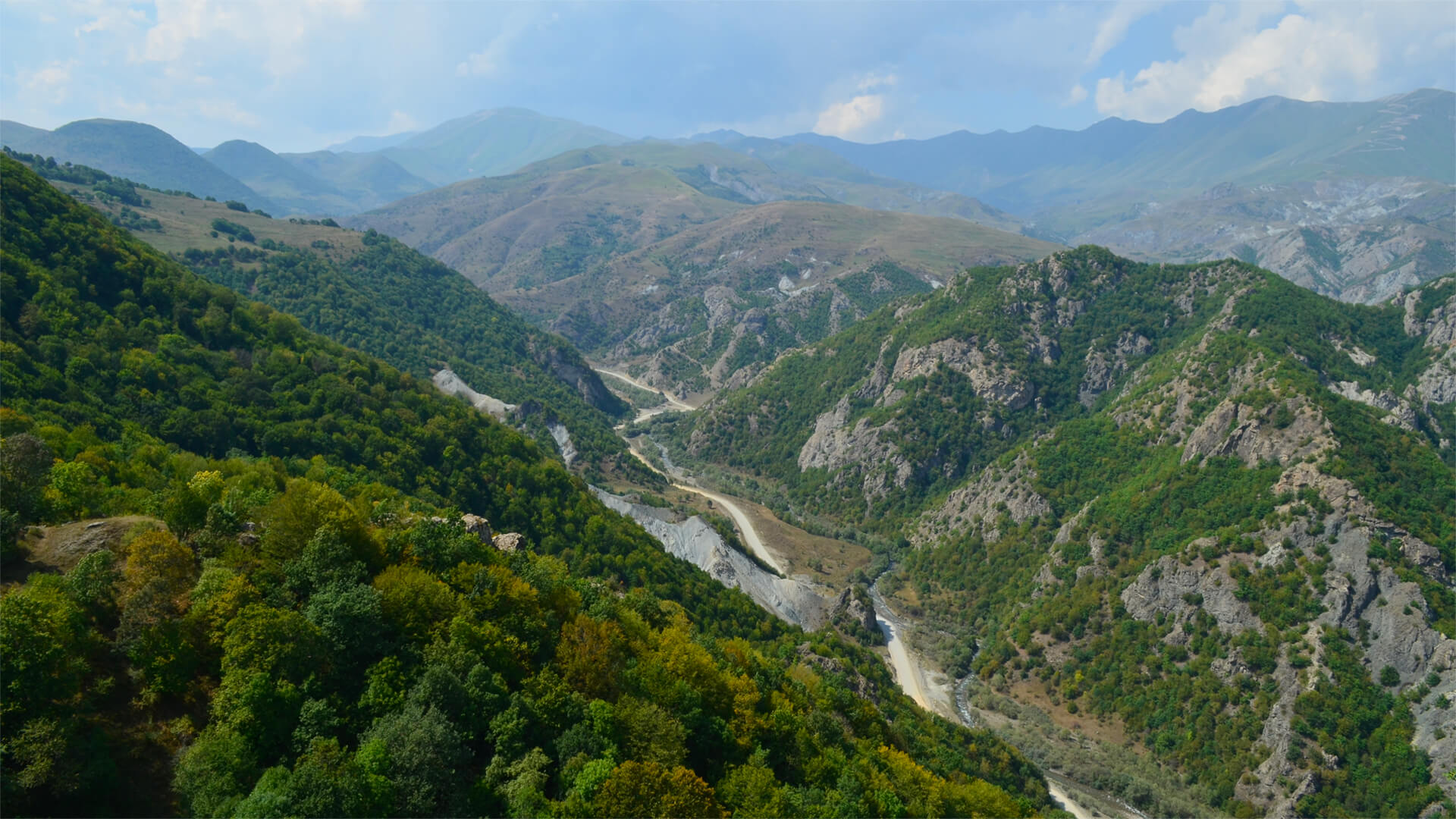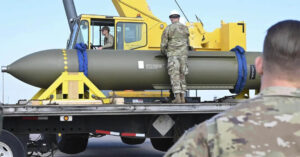After Azerbaijan’s lightning assault on Nagorno-Karabakh caused ethnic Armenians to flee the region, there’s potential that Azerbaijan will continue to invade Armenia proper.
The motivation for this second phase of the invasion would be to control a land corridor connecting different parts of Azerbaijan. Thanks to Stalin’s chaotic cartography, this region’s power dynamics are just a tad messy. Now mix in some complex geography and bippity-boppity-boo; welcome to the Caucasus.
There is a more significant issue playing out behind the scenes, though. If Azerbaijan is successful in this second invasion, it would place Turkish and Iranian powers within spitting distance of one another. And I can assure you that no one wants to see how that plays out.
Here at Zeihan On Geopolitics we select a single charity to sponsor. We have two criteria:
First, we look across the world and use our skill sets to identify where the needs are most acute. Second, we look for an institution with preexisting networks for both materials gathering and aid distribution. That way we know every cent of our donation is not simply going directly to where help is needed most, but our donations serve as a force multiplier for a system already in existence. Then we give what we can.
Today, our chosen charity is a group called Medshare, which provides emergency medical services to communities in need, with a very heavy emphasis on locations facing acute crises. Medshare operates right in the thick of it. Until future notice, every cent we earn from every book we sell in every format through every retailer is going to Medshare’s Ukraine fund.
And then there’s you.
Our newsletters and videologues are not only free, they will always be free. We also will never share your contact information with anyone. All we ask is that if you find one of our releases in any way useful, that you make a donation to Medshare. Over one third of Ukraine’s pre-war population has either been forced from their homes, kidnapped and shipped to Russia, or is trying to survive in occupied lands. This is our way to help who we can. Please, join us.
Transcript
Hey everybody. Peter Zeihan here coming to you from an exciting hotel room. The news I wanted to talk today is about something that has to do with caucuses again. For those of you who remember a few weeks ago, the Azerbaijanis launched a fair bit of a lightning assault on a place called Nagorno-Karabakh, which is an area that was populated with ethnic Armenians.
And the war was over in less than three days. And pretty much all of the Armenians who were living there have since absconded and left for Armenia proper, where there’s now going to be, it looks like a second phase of that conflict where the Azerbaijanis are likely to invade Armenia proper. What’s going on here is that the Azerbaijanis are looking for a land corridor to connect to parts of the country in order to explain the significance of that and have to do a little bit of screen sharing here to Google Zoom, which was Earth, which is one of my favorite programs ever.
Anyway, here we are looking at where the former Soviet space in the north meets with the Middle East in the South and the Caucasus is this mountainous land bridge in between. And let’s just go through a little bit more, okay. So the northern caucuses or the greater caucuses is this line here very rugged, very steep, home to a lot of ethnic minorities like you would expect in any number of mountainous zone.
This is an area where the Russians have always had a problem. The Chechens, if you remember them, live right here. And then you’ve got these two little enclaves in the north, Abkhazia here in South Ossetia here, where the Russians have sent in troops and basically occupy them and make them de facto Russian territory. And some people would say that the Russians are basically trying to do this in Ukraine as well.
But it’s I think it’s important to understand that for the Russians, it’s all about controlling the access point. So that’s Ukraine, where that’s the worst that they’ve watched here in Abkhazia and South Ossetia. The Russians know that their population is dying out. So they believe that they came forward, positioned troops in the access points that they will have an easier time defending themselves.
So there is a coastal road here in Kasia. There’s a path that links the northeast Russian province, which is part of the Russian Federation with the South Ossetian province, which is part of Georgia. And they’re trying to plug those access points. So you’re going to see a lot of this, whether it’s in Central Asia or the western periphery that is near Europe.
And that actually is kind of relevant to the discussion about what’s going on in this region and where media. Now, here we’ve got the former Soviet Republic of Azerbaijan, the capital here is Baku. It’s got about half the population, the entire place, the former Soviet Republic of Europe, an independent Armenia, is right here. You have the Turks over here and the Iranians to the south know Egypt a little bit more.
And Yerevan, capital of Armenia, Mt. Ararat, is a zone that supposedly Noah’s Ark crashed into as the floods receded. It is the national symbol of Yerevan, of the Armenians, and it is not in their territory, it’s in Turkey, but they can see it. A dominates the skyline from the capital. Nagorno-Karabakh is this mountainous zone over here. This is the area that the Azerbaijanis recently liberated from Armenian control and the caravan, which is right here, is that chunk of Azerbaijani territory that the Azerbaijani would like to physically connect to the country.
And if all of this seems like just cartographic spaghetti, it is. And you can think Joe Stalin for that, because at the time that the Soviet Union was gaining control of this area in the twenties, he went through and modified all the borders to make sure that if any of these areas ever got independence again, that it would immediately be at one another’s throats.
And he wielded his pen with extreme levels of skill so that the people a little bit closer. The dominant issue in this area actually isn’t the Russians. The Russians had a defense agreement with the Armenians until very recently, and I guess technically it’s still in force. But the Russians have moved most of their troops out, moved them to Ukraine because they need every pair of hands and every gun.
And yet and that’s kind of held this area frozen. But once you get into the lesser Caucasus, remember greater Caucasus, which are the North less your Caucasus or this kind of broad zone in the south, the mountains are nearly as onerous. It’s still mountainous, it’s still difficult. But there are a lot more corridors that access this area. And in this zone, it’s traditionally not been the Russians that have been the major power.
It’s been either the Turks or the Iranians. Well, let’s see here on that. The local powers have always had those Turks and Armenians is accessing one another’s land. The Turks and the Iranians have always had a bit of a problem rubbing up against each other. There are a number of mountain passes and access points and corridors that allow access, but they’re all seasonal and limited, with one exception.
And that is this right here. This is the Cross River, and this is the best point of access between Anatolia or Turkey or the Turks in Persia or Iran in the Arabians. The thing is, Stalin, again, it’s split. So in the north, the northeast section of that corridor is controlled by Armenian. It’s home to the Armenian, the capital of Europe in the northwest chunk is controlled by the Turks and is home to Mount Ararat.
The Southeast Choke is Nikitin and it is controlled by the Azerbaijani and in the southwest Choke is Iranian, right here in Iranian Azerbaijan. So goes the thinking. The Iranians are really happy with the current state of affairs because if this corridor is split into four different chunks, then no one can really use it to pour Turkish power down into northern region.
However, what’s going on with the Azerbaijanis is they want a corridor that crosses this zone of southern Armenia and directly links Azerbaijan to Nikitin. And then there’s a road and rail system here that goes into Turkey proper. If that happens and you have Turkish power controlling over half of the corridor and the Turks can directly reinforce Baku by road and by rail.
And from the Iranian point of view, this would be a disaster, a disaster from Armenian point of view as well. Not only would they lose control of some of their southern territories, but then they would be completely locked off and surrounded by Turkish power. And if you’re familiar with your history, the Armenian genocide carried out by the Turks in World War One was pretty brutal.
And so the Armenians are looking for anything, anything to kind of grab on to a degree of independence. They need a security gear, a security guarantor. And if they can’t have the Russians and the Iranians or the all the other player in town in Azerbaijan getting control of southern Armenia would basically end that forever. And then it would just be a matter of time before Armenia itself becomes a state repeating of the Turkish system, rather than the Iranian or the Russian system, something that the Armenians would rather avoid.
But for the Iranians, this is also a national issue, because this corridor, if you continue following the south, eventually reaches the city of Tabriz, which is the capital of the northern region. Excuse me, if Iran and northern Iran is primarily populated by ethnic Azeris who are basically the same ethnic stock as the folks who run as a region.
So they have always been the group in Iran that the Iranians have been most nervous about exercising a degree of independence, that the Turks get de facto control of this area, all of a sudden that is very much in play. So we have a situation here where maybe the Russian are only being stage left because of the situation in Ukraine.
They can only focus on the things that are core to them. And since they control Abkhazia and South Ossetia, they control the access points to the Northern Caucuses, and they’re kind of declaring that good enough. But with the Turks now rising, we’re going to have a second level of contest in this region between the Turks and the Iranians, with the Azerbaijanis being a very, very, very willing ally.
So what we’re going to see over the next several weeks or months, something that the United States is concerned about, is this point becoming in play, because if that becomes in play, then this whole or all of a sudden becomes in play. And we need to start thinking about what it means to have Turkish troops in the cave in hard on another part of the Iranian border.
That’s where it is. Okay. I think that’s everything. You guys take care.








